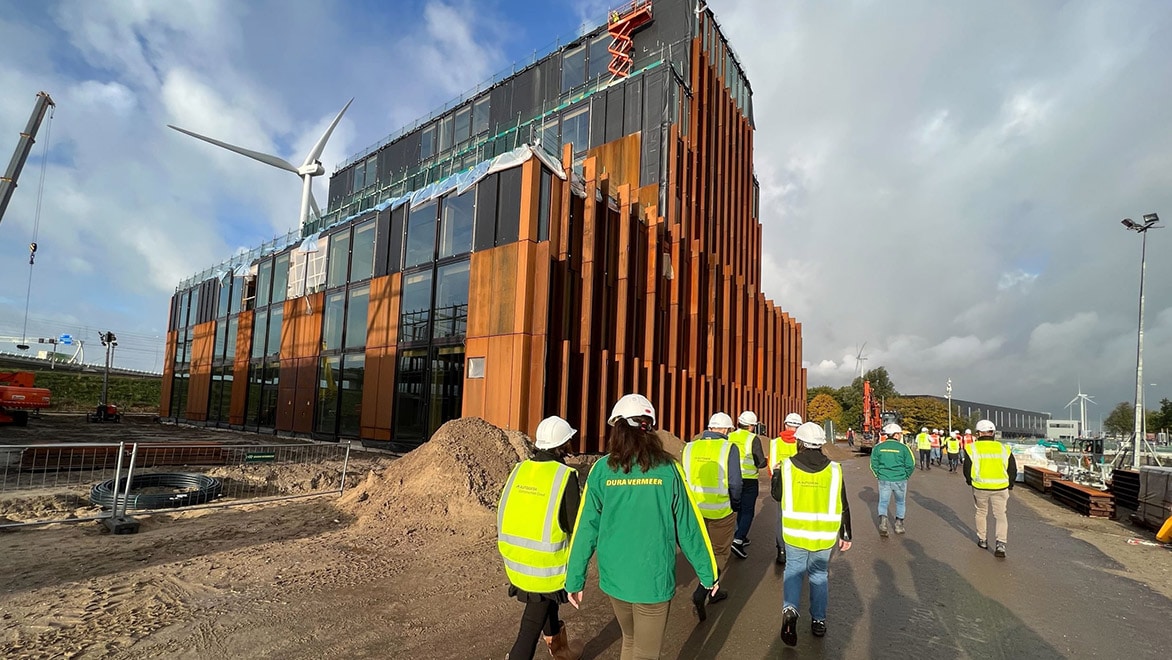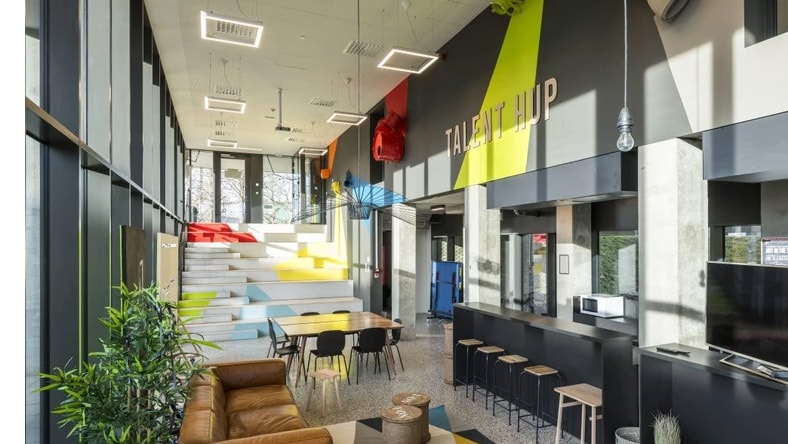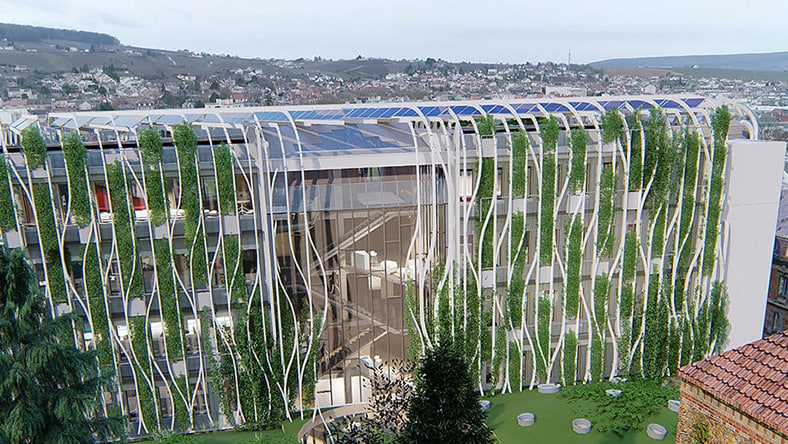& Construction

Integrated BIM tools, including Revit, AutoCAD, and Civil 3D
& Manufacturing

Professional CAD/CAM tools built on Inventor and AutoCAD
Sustainable construction is an approach to design and construction that prioritizes long-term environmental, social, and economic sustainability through efficiency and moderation in using materials and energy.
Energy-efficient design includes everything from proper insulation to integrating renewable energy sources and energy-efficient appliances to reduce energy waste.
Water conservation encompasses a range of practices, technologies, and strategies to reduce water use and preserve the quality of water resources.
Waste reduction involves minimizing waste generated during construction and over the lifespan of the building while maximizing materials that can be reused or recycled.
Sustainable construction software can aid in compliance with various regulations & certifications such as Leadership in Energy and Environmental Design (LEED), Building Research Establishment Environmental Assessment Method (BREEAM), and other government incentive programs.
Learn about the benefits of sustainable construction software from Autodesk.
Project management tools help streamline planning and execution, making managing timelines, coordinating teams, and keeping projects on track easier.
Sustainable construction software helps to reduce waste by
ensuring the efficient utilization of energy and materials to reduce
overall project costs.
Gather valuable data on the environmental impact of a project, including carbon emissions, energy usage, and waste generation, for reporting and analysis.
Sustainable construction software can help companies ensure they are in compliance with local regulations, avoiding fines and legal complications.
Sustainable construction software plays a vital role in the planning stage of a project in optimizing for eco-friendly design and resilience, modeling for energy efficiency, and aiding in material selection.
Sustainable construction software helps evaluate materials for environmental impact through lifecycle and cost analyses, identifying opportunities for local sourcing while planning for durability and maintenance.
Simulations from sustainable construction software can help inform construction methods to evaluate the impact on a building's sustainability and aid in waste management planning for deconstruction and recycling.
Comprehensive field and project management software that delivers a broad, deep, and connected set of tools for builders.
Cloud-based design co-authoring, collaboration, and coordination software for architecture, engineering, and construction teams. “Pro” enables anytime, anywhere collaboration in Revit, Civil 3D, and AutoCAD Plant 3D.
Perform accurate 2D takeoffs and generate automated quantities from 3D models in a single online solution.
UPGRADE ESTATE
Learn how Upgrade Estate enhanced collaboration and sustainability in construction using BIM 360, avoiding 9,000 preconstruction clashes.
LEVVEL
Discover how cloud-based collaboration helped reduce design time and CO2 emissions for the Netherlands' largest dike.
OUYOUT
Find out how OuyOut transformed a dilapidated school into a sustainable, energy-efficient workspace with Autodesk's help.
BRITISH ANTARCTIC SURVEY
Learn about the British Antarctic Survey using sustainable techniques and Autodesk tools for efficient, low-carbon construction in Antarctica.
Learn more about sustainable construction software and how it benefits workflows and projects with these resources from Autodesk.
There’s an urgent need for sustainable construction in today's world that presents many opportunities to reduce emissions at every stage of construction.
The benefits of sustainable construction extend beyond the environment and natural resource extraction by providing tangible business advantages to construction companies and their clients.
Material selection is a crucial aspect of sustainability. Take a look at the top 7 sustainable construction materials changing the industry.
Recent research data explores how sustainable practices and technologies are shaping the architecture, engineering, and construction industries.
Green practices can lead to lower energy costs, better compliance with environmental regulations, and financial incentives, ultimately positioning your firm to win more jobs.
Sustainable construction principles are essential for minimizing the environmental impact of the construction industry by providing long-term cost savings, improving energy efficiency, and reducing material waste. Sustainable construction software helps construction firms comply with regulatory requirements to avoid potential fines or sanctions and enhances the health and safety of occupants through better indoor air quality, natural lighting, etc.
Incorporating sustainable practices into your construction project can significantly impact its environmental impact. The best way to achieve this is through early planning, even before design, to emphasize sustainable construction throughout all project stages. You can leverage sustainable best practices through various means, such as material selection, water conservation, waste management, etc. It's essential to think through the entire building lifecycle to maximize sustainability for your construction project.
Sustainable design software plays a pivotal role in reducing the environmental impact of buildings through various tools and analyses that can help improve energy and water efficiency, optimize materials and design, & assess the life cycle of any construction project.
Sustainable design software solutions can help secure green building certifications by providing tools and resources that help project teams meet the criteria for these certifications. These tools and resources can help project teams to identify and select sustainable materials, design for energy efficiency, reduce waste, and comply with documentation requirements for certification approval.
Sustainable construction and design software can provide several benefits for building projects, including reduced environmental impact, improved occupant health and well-being, increased productivity and efficiency, and lowered costs. Sustainable construction software can also speed up workflows and provide valuable tools to help analyze the sustainability of a building design or construction project.





